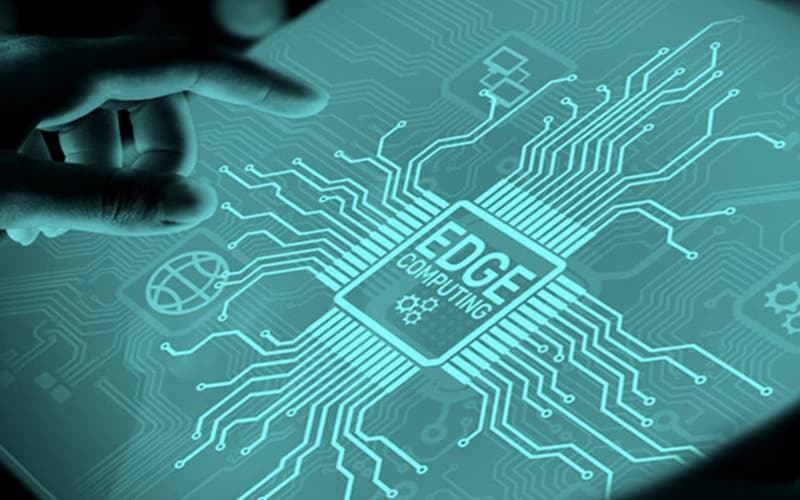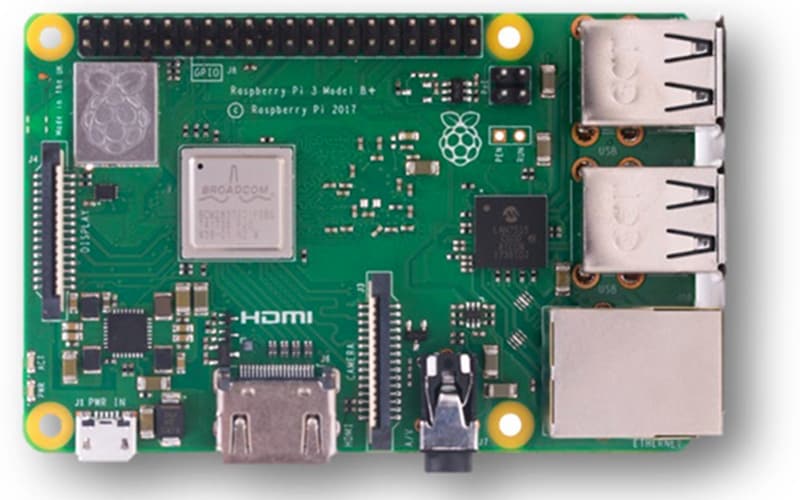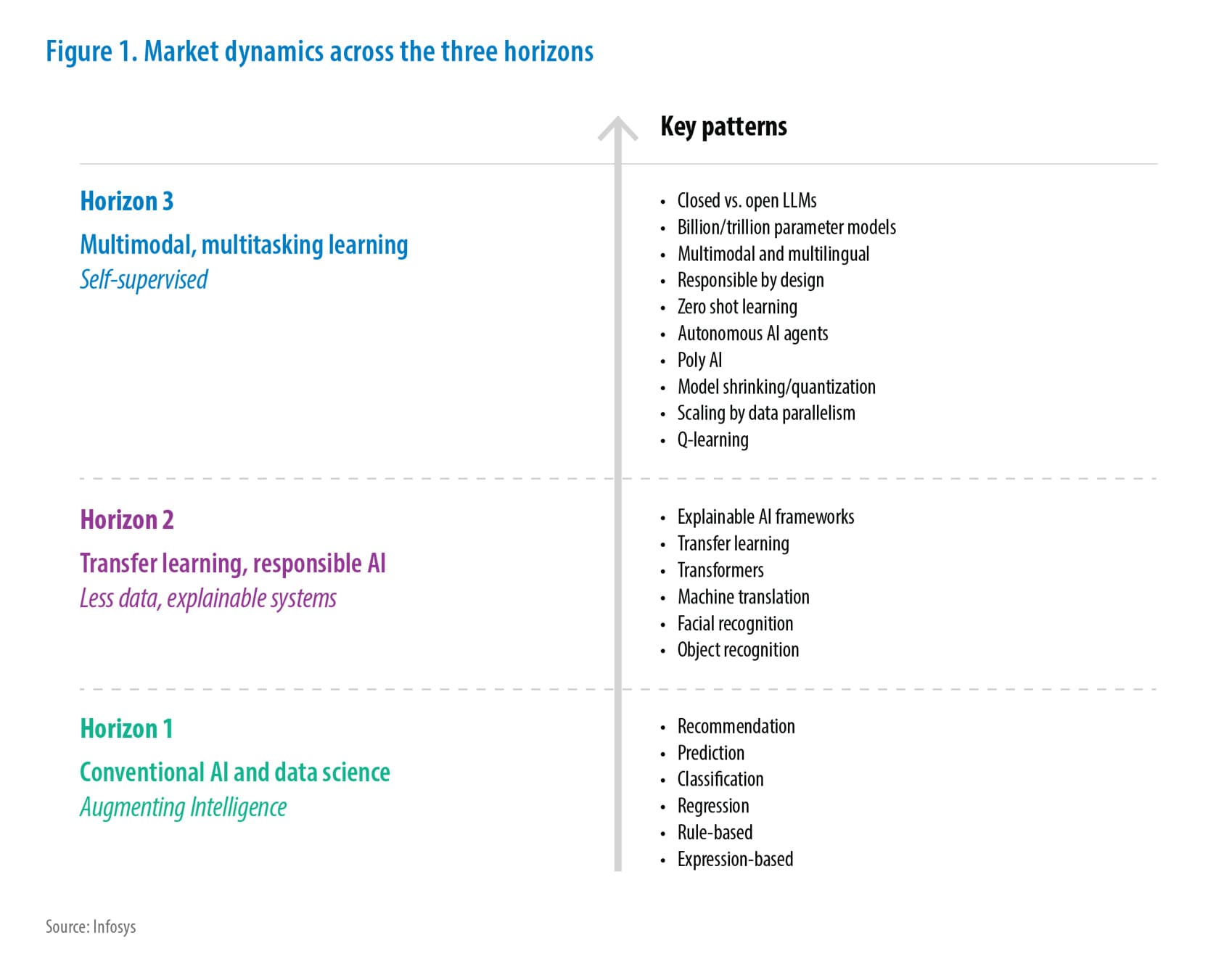Artificial Intelligence
Video Analytics on Edge with Raspberry Pi
This paper focuses on deploying Infosys Video Analytics Solution, part of Infosys Topaz, on Edge boards like Raspberry Pi, which has the advantage of a much lower footprint in terms of form factor, weight, and power requirements.

Insights
- Infosys Video Analytics Solution, part of Infosys Topaz, is ideal for applications like drones and robots which can carry out computer vision tasks for object detection, event detection etc.
- The aspects described in this paper are curated from our experience of deploying video analytics solutions on the Raspberry Pi Edge Board on a single board computer.
Introduction
With rapid technological advancements, almost all products and services today are leveraging the latest AI (Artificial Intelligence) and Computer Vision technologies making business processes be smart and reliable. Computer Vision (CV) applications are having a significant impact on processes that are reliant on human-in-the-loop to visually inspect and make decisions. AI can now not only identify objects but also predict with higher accuracy and this is only increasing every day. There is, however, considerable scope with majority of use cases involving image & video processing that are yet to be automated.
Multiple vision-based studies highlight the usage and importance of video analytics in human-object detection and tracking [1], anomaly detection [6, 7], varied facets of day-to-day life [2,3,4,5] and more. Adoption of Computer vision has been steadily increasing across industries like manufacturing, supply chain, retail, energy, and others. These systems are trained to inspect and analyze thousands of products or processes per minute, making split-second decisions surpassing human capabilities.
To provide actionable intelligence with higher accuracy, Infosys Video Analytics (IVA) is the comprehensive solution for vision-based use cases. Infosys Video Analytics is an AI- based solution that empowers businesses to leverage video content for actionable business insights.
IVA is a cross-platform solution with deployment compatibility from high-end servers to smaller Edge boards. This paper delves into the benefits of encompassing edge deployments for Computer Vision tasks and how IVA can bring the power of Computer Vision and AI to the Edge.
Edge capabilities allow IVA to be leveraged in applications that have constraints on form factor, weight, and connectivity such as mobile robots or drones. It also helps achieve lower latency which helps expedite service and generate value.
This paper also looks at how IVA can be installed on a Raspberry Pi Edge Board and evaluates the challenges therein as well as the benefits.
Rise of Edge Intelligence
With advances in AI and the ability to compress AI models into tiny form factors, it is now possible to bring intelligence to the edge, opening newer opportunities for AI-based automation. Edge computing has gained a lot of attention recently, and Edge Intelligence has risen to be amongst the top emerging and impactful technologies for 2023(as per top research firms like Gartner and Forrester).
Source: Gartner: Emerging Tech Impact Radar: 2023, Forrester: Top 10 Emerging Technologies for 2023
What is Edge Intelligence
Artificial Intelligence (AI) is revolutionizing the consumer space, but its uptake is less mature in other business segments. However, with the onset of powerful Single Board Computers (SBC’-s) equipped with their own graphics units it is now possible to manage considerable processing locally on SBC’s.
Edge AI, using “tiny” models, is poised to advance the technology’s adoption throughout the enterprise ecosystem. Enter a new paradigm where AI systems are secure, intelligent, responsive, and independent and yet talk to each other in real time — all without the dependence on internet connectivity.
Edge AI is one of Applied AI’s most advanced trends yet. Complex algorithms run on edge devices, and offer real-time predictive ability, all without dependence on internet connectivity.
In this paradigm, intelligence is aware, data is private, systems are secure, and personal assistance is instant, opening doors for new enterprise AI applications.
However, not all current AI will work on the Edge, and many applications and models still require the computational resources and processing technology provided by massive cloud data centers. These deficiencies can be overcome using clever AI techniques, including data and model engineering, and MLOps for edge, along with device-specific tuning, deployment, and validation.
In the future, using Edge AI, enterprises will save considerable costs in model training with compressed models, gain better environmental credentials, and ease complexity, privacy, and security challenges of transferring vast amounts of data to the cloud.
Thanks to Edge AI, big enterprises will infuse edge intelligence in customer-centric digital engagements and launch applications that retain value at scale.
Processing at Edge
Processing at Edge opens new possibilities for leveraging AI because of the benefits it offers as listed below:
- As data is processed locally, it eliminates the need to transport image or videos over the network, thereby reducing the bandwidth requirement significantly. This also results in lower latency and improved inference times.
- As Edge Boards have a lower footprint, they result in reduced upfront costs. It is also easier to replicate and scale the solution to multiple edge boards.
- These edge boards are built to interface with wide variety of sensors and actuators, and this allows us to monitor and control the factors affecting the process to be automated.
- These edge boards are well supported by industry-leading development platforms that adhere to well-established secure practices.
- For image and video processing applications, there is a need to scale the solution across locations and premises. Edge computing comes with toolkits to achieve this because of modular design.
- Various IoT (Internet of Things) frameworks support remote monitoring and software updates for Edge devices and sensors. This offers centralized control with dashboards, offering a comprehensive overview.
The recent trend is of new edge boards designed specifically to handle AI workloads being released. This would further boost the adoption of the Edge board ecosystem in Computer Vision applications. The next section elaborates what Infosys Video Analytics solution and how it helps bring intelligence to Edge.
Edge Intelligence with Infosys Video Analytics
Infosys Video Analytics is an AI- based solution that empowers businesses to leverage video content for actionable business insights. Packed with rich features such as Computer Vision, it helps enterprises identify scenarios and objects within videos. The solution ingests feeds from motion and fixed cameras. It also simultaneously scans each frame of the video, extracts information about events in the frame, and saves this as metadata in a selected database.
The solution architecture comprises layers such as data persistence, data processing, and APIs (Application Programming Interface) for analytics. Other capabilities such as data mining, knowledge curation and service curation are also available and can be customized per business needs.
IVA supports OS (Operating System) platforms such as Windows and multiple flavors of Linux. Most SBCs run on Linux variants derived either from Debian or Ubuntu distributions.
Infosys Video Analytics helps enterprises:
- Leverage insights from historical video data by integrating with active video repositories, thereby extending value of existing infrastructure investments.
- Capture and correlate valuable data with business KPIs to generate greater business value.
- Reduce manual effort spent in monitoring video events.
- Minimize the errors in incident or event detection.
- Improve how operations are executed, thereby reducing costs.
- Rapidly investigate cases on account of immediate anomaly detection.
- Enhance process performance with the solution’s scalable capacity.
The next section details a specific implementation of the IVA on the Raspberry Pi SBC and evaluates the findings.
Deploying IVA on Raspberry Pi
Raspberry Pi is a series of low-cost small single board computers that are available typically in a credit card-sized form factor. Raspberry Pi runs on the flavor of Debian Linux which is compatible with IVA and most computer vision libraries. The Pi as it is called, also provides a set of GPIO (General Purpose Input/Output) pins, allowing control of electronic components for physical computing and exploring the Internet of Things (IoT).

Steps to set the Raspberry Pi board to run IVA Pipelines:
- Install the operating system on the Pi. The Pi Foundation provides Raspberry Pi OS based on the Debian Flavor of Linux.
- Install the minimum software for running IVA. i.e., Dot Net SDK, Python etc.
- Install EmguCV
- Copy IVA runtimes to the appropriate user folders.
Detailed steps for the setup are given below:
| Raspberry Pi OS Setup | Software Setup | Build EmguCV | IVA Setup |
|---|---|---|---|
|
|
|
|
Inference on Edge
The above figure demonstrates how Infosys Video Analytics (IVA) as setup on a Raspberry Pi will achieve AI model inference locally on the board and render the output video. Here all IVA stages, i.e., Video Ingestion, Frame Grabber, Frame Processing and Frame rendering will be executed locally on the Pi.
Key benefits
Key benefits of leveraging IVA for Edge Implementations:
- IVA provides the flexibility to be deployed on multiple OS platforms such as Windows and Linux, or Linux- based OS such as Debian tailored for Edge devices.
- Platforms can be switched with minimal configuration changes. This allows IVA to be leveraged on a wide variety of Edge Boards Platforms.
- IVA provides a modular interface enabling integration of various kinds of sensors and actuators.
- Specialized Edge Boards such as the Nvidia Jetson family provide excellent AI workload processing performance in a smaller form factor.
- Leveraging edge capabilities allows us to reduce implementation costs for use cases that do not require high-end processing.
- Edge boards have lower power, bandwidth, and space requirements.
Challenges on Edge
Edge implementations come with their own set of challenges as detailed below:
- Raspberry Pi boards provide lower throughput resulting in lower inference speeds as compared to high end servers. However, hardware accelerators can be used to supplement computing capacity for higher speeds.
- Edge Boards require specialized setups such as OS and other specifically customized software components. This requires specialized skill and knowledge to program such devices.
- Connecting more devices at Edge increases scope and function of IT teams. This would mean increased scale across disciplines such as network, security, storage etc.
- Edge computing changes security footprint requiring security to be managed across a wide range of platforms and a larger number of devices.
- Monitoring and updating a considerable number of devices adds to the ongoing maintenance efforts.
Conclusion
In conclusion, implementing IVA on Edge Boards such as the Raspberry PI allows us to harness the power of Infosys Video Analytics for AI use cases having stringent requirements on form factor, size, bandwidth, and accessibility. It also opens avenues for gathering intelligence from myriad factors affecting user processes apart from just video feeds.
The future looks bright with the power of AI encompassing all aspects of human life bringing in increased intelligence and insights, and Edge AI will have a significant role in making this happen.
References
1. Patrikar, Devashree R., and Mayur Rajaram Parate. "Anomaly detection using edge computing in video surveillance system." International Journal of Multimedia Information Retrieval 11, no. 2 (2022): 85-110.
2. ShirahamaK, Grzegorzek M, UeharaK(2015)Weakly supervised detection of video events using hidden conditional random fields. Int J Multimed Inf Retr 4(1):17–32.
3. Wu P, Liu J, Shen F (2019) A deep one-class neural network for anomalous event detection in complex scenes. IEEE Trans Neural Netw Learning Syst 31(7):2609–2622.
4. Long C, Cao Y, Jiang T, Zhang Q (2017) Edge computing framework for cooperative vide processing in multimedia iot systems. IEEE Trans Multimed 20(5):1126–1139.
5. Suresha M, Kuppa S, Raghukumar D (2020) A study on deep learning spatiotemporal models and feature extraction techniques for video understanding. Int J Multimed Inf Retr 9(2):81–101.
6. Guo F, Wang Z, Du S, Li H, Zhu H, Pei Q, Cao Z, Zhao J (2019) Detecting vehicle anomaly in the edge via sensor consistency and frequency characteristic. IEEE Trans Veh Technol 68(6):5618–5628.
7. MuhammadK,Khan S, ElhosenyM,Ahmed SH, Baik SW(2019) Efficient fire detection for uncertain surveillance environment. IEEE Trans Ind Inf 15(5):3113–3122.
8. https://www.infosys.com/iki/perspectives/tiny-ai-enterprise-edge.html
9. https://www.spiceworks.com/tech/networking/articles/what-is-raspberry-pi/

Subscribe
To keep yourself updated on the latest technology and industry trends subscribe to the Infosys Knowledge Institute's publications
Count me in!













